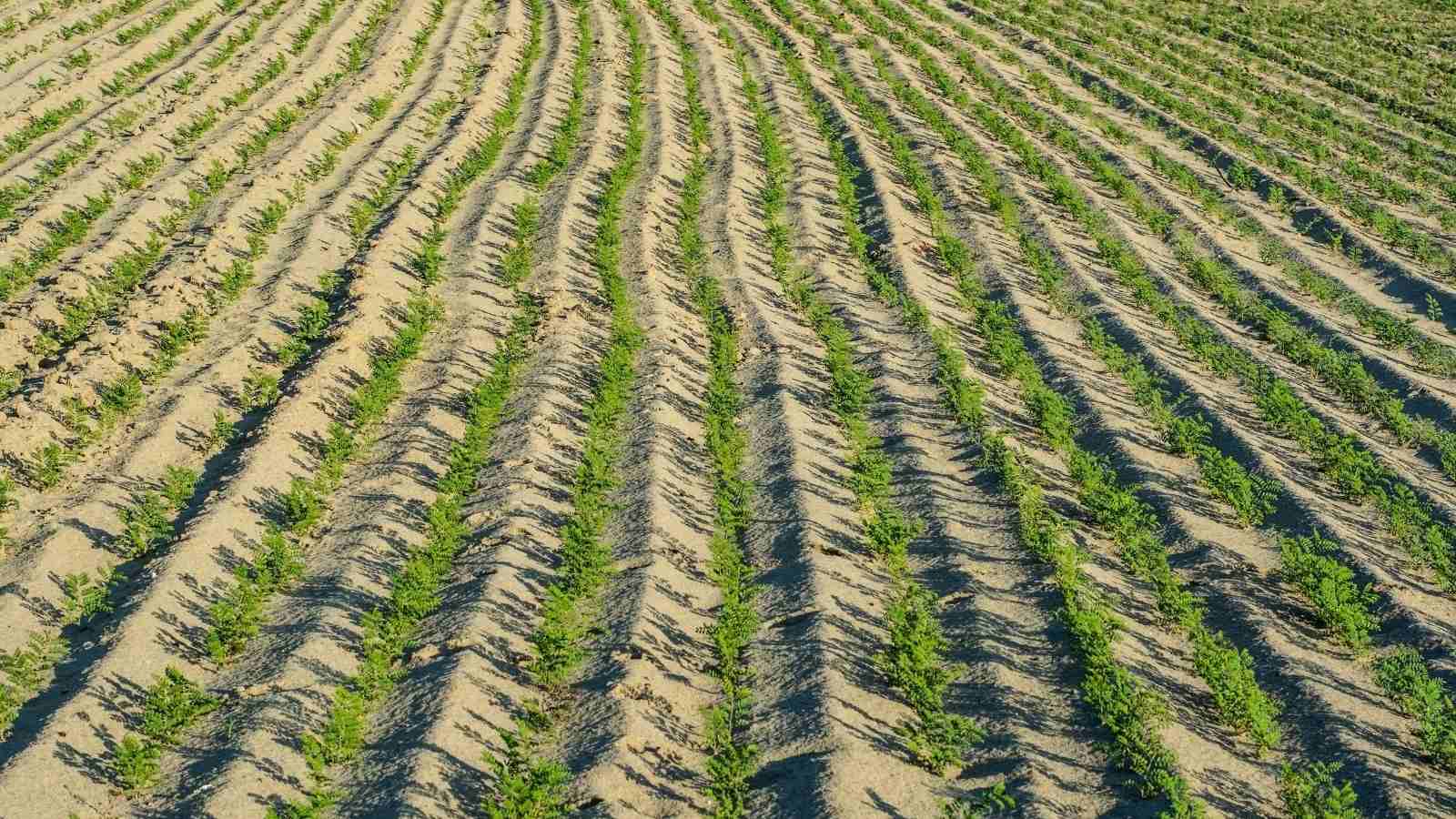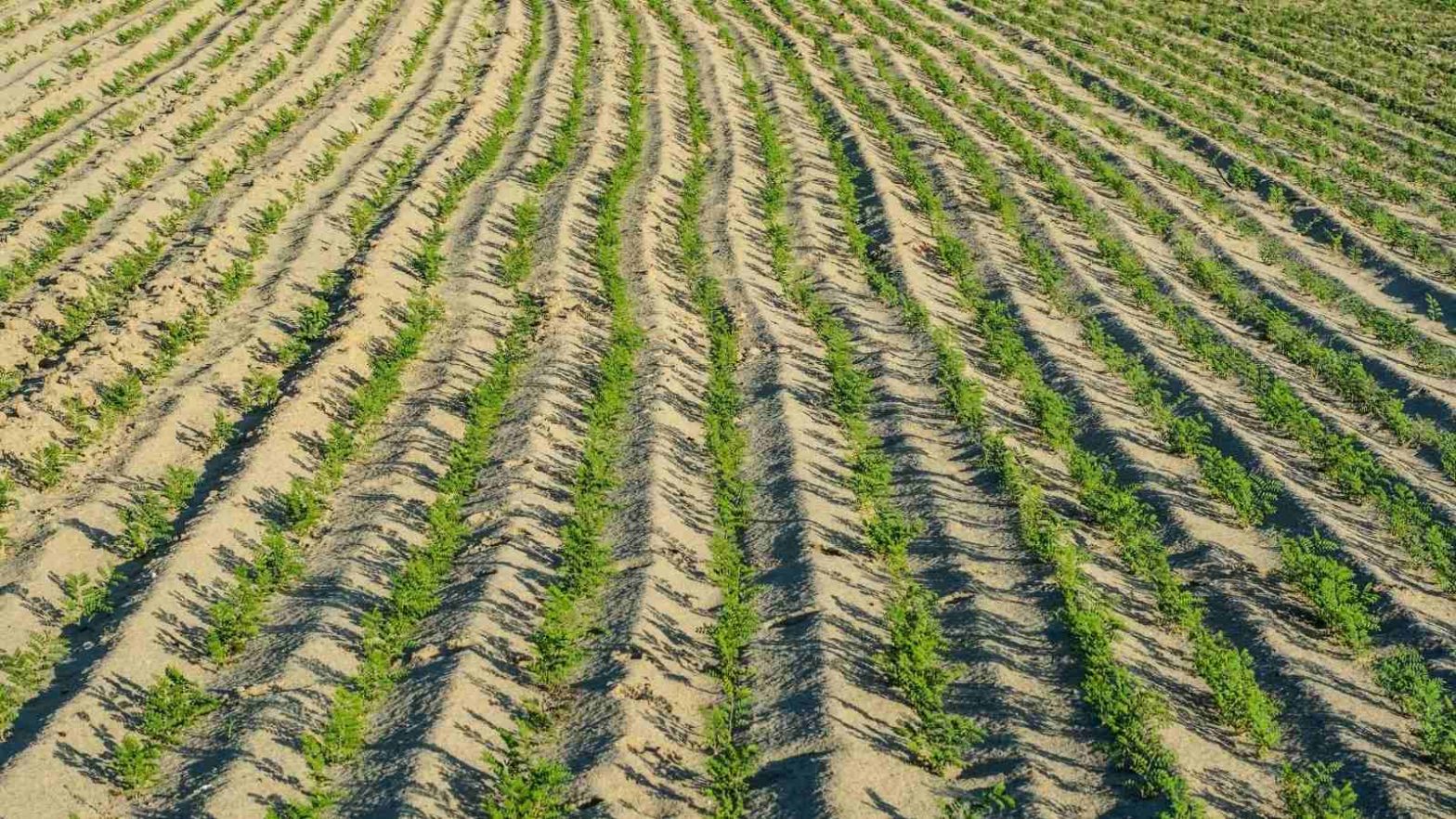The black gram is a common group of pulses in India. Pulses are in itself, very important for the regular diet of the Indians. This crop is highly nutritious. The agricultural research reveals that this crop contains at least 25 per cent of protein. Moreover, the high amount of protein can easily take over the cereal based diet. It has been found that this black gram crop primarily contains vegetable protein which gets absorbed into the body very easily.
Apart from the adequate amount of the presence of proteins, this crop also contains a proper amount of vitamins and minerals. High amount of fiber in this crop helps in the digestive system of the consumers. This crop and its residual parts over a long time, have been used as a great fodder material. This fodder crop works great for the milching animals and are when worked as farm yard manure.

The most important states in which this crop is grown are Uttar Pradesh, Madhya Pradesh and the southern state of Andhra Pradesh. Although these states have been delivering high yield, yet through the commercial farming of this crop, Bihar stands out as the leading producer of black gram. In today’s world, fitness has become a very important aspect of daily life.
Owing to this increasing fitness drive, demand for black gram has also increased. Black gram forms a very important component of the protein rich diet that is usually suggested to people trying to stay fit physically. The calorific value of this crop is only three hundred and forty seven kilo calories ( 347 kcal) per hundred grams (100 g). Well here in, we have laid out the different important aspects that you should know to raise black gram farming in India.
1. The two main varieties of black gram that can be grown in India with high yield
- LBG 17 – The black gram crop is extremely prone to various kinds of diseases and pests. These diseases and pests affect the complete production, reduces nutritional quality and thus adversely affects the income of the farmer. So, one of the most important criteria to devise the different advanced varieties of black gram is to make the crop resistant against these dangerous pests and diseases. Likewise, this LBG 17 variety of black gram is resistant against the dangerous powdery mild dew pest. This variety is primarily grown in the deccan part of the country. This crop grows best during the rabi season of agriculture in India.
- Jawa har urd 2 – This variant of black gram is resistant against the dangerous cercospora leaf spot disease. The other variant of this variety of this black gram crop is Jawa har urd 3. Jawa har urd 3 is resistant against pests like stem fly besides being effective against the cercospora leaf spot disease. This variant of black gram can be easily grown during the spring season on India.
2. The necessary soil conditions which are favourable for the black gram farming in India
The black gram crop is very picky when it comes to the soil in which they can grow and flourish while maintaining steady productivity.
- Likewise, the black gram crop variants in India grow well only in the heavier variety of deep loamy soil.
- The soil needs to be properly drained ad should have proper channels for aeration to support black gram farming.
- The optimal range of pH for growing black gram is between 6.5 to 7.8. So, the soil should be close to neutral to support the farming.
- The soil should be made fertile with farmyard organic manure. Chemical fertilizers and pesticides should be avoided as much as possible. These chemical fertilizers tend to leave a thin layer of calcareous soil which makes the soil inappropriate for black gram farming.
- However, in the southern parts of India black gram crop can also be grown in the black cotton soil. Wit heavy irrigation and proper care, this soil can also be grown in sandy soil.
- If this crop is being grown in summer season, then proper measures need to be taken to ensure minimal weeds and pebbles in the fields.
3. The climatic conditions which is required by the black gram crop
Black gram crop grows well within the temperature range of 26 to 35 degree Celsius. This crop requires rain within the range of 80 cm to 170 cm in a year. The humidity of the place where black gram farming needs to be done should be very high. The humidity may at times be equal to the level as required for paddy farming. With these conditions black gram farming can be easily done.

